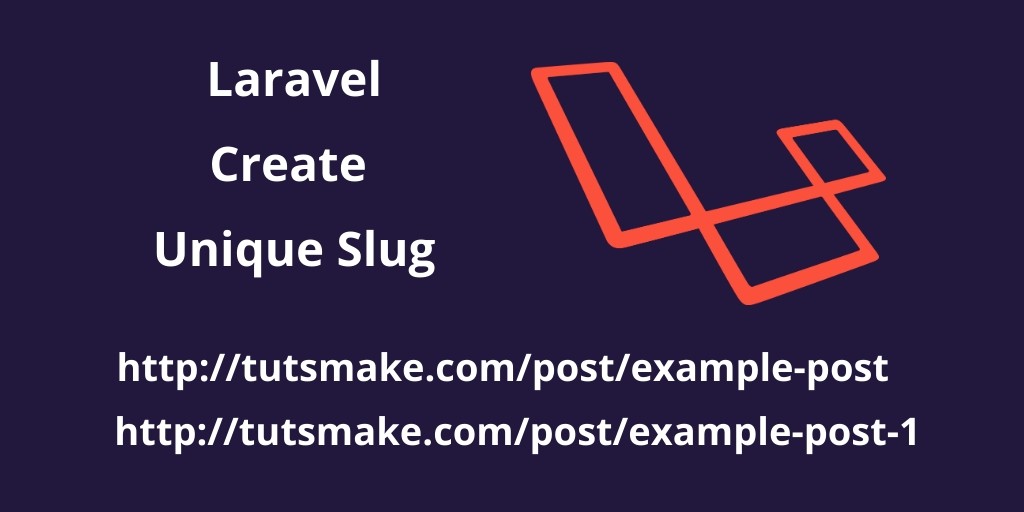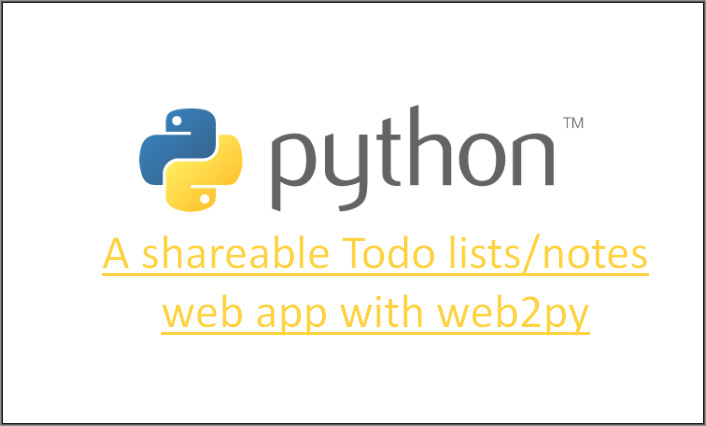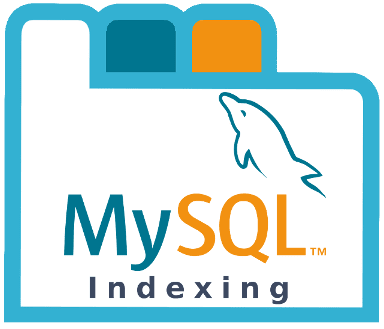Laravel create or generate unique slug for the blog post. In This tutorial, we will demonstrate to you how to make unique slug or seo friendly slug url for each post in laravel using the cviebrock eloquent sluggable laravel package.
When we create a blog post project in laravel, we need to create or generate unique slug for each blog post. This tutorial will help you in generating or creating a unique slug for each post in your laravel blog post project.
Laravel Generating Unique Slug
Just follow the below steps and create unique slug for a blog post or any slug seo friendly slug url in laravel:
- Install Laravel Fresh New Setup
- Setup Database Credentials
- Install Eloquent Sluggable Package
- Generate Model and Migration
- Create Resource Route & Controller
- Create the blade view
- Start Development Server
- Conclusion
1). Install Laravel Fresh New Setup
We need to install laravel 6 fresh application using below command, Open your command prompt and run the below command :
composer create-project --prefer-dist laravel/laravel Blog
After successfully install laravel 6 Application, Go to your project .env file and set up database credential and move next step.
2. Setup Database Credentials
In this step, we will set database credentials in the .env file. Let’s open .env file.
DB_CONNECTION=mysql
DB_HOST=127.0.0.1
DB_PORT=3306
DB_DATABASE=here your database name here
DB_USERNAME=here database username here
DB_PASSWORD=here database password here
3. Install Eloquent Sluggable Package
Next, open command prompt and go to your project root directry like cd/project name. And type the below command to install the eloquent sluggable package for generating unique slug of posts:
composer require cviebrock/eloquent-sluggable
After successfully install eloquent sluggable package, type the below given command in command prompt:
php artisan vendor:publish --provider="Cviebrock\EloquentSluggable\ServiceProvider"
4. Generate Model and Migration
Now we will create a table name posts and it’s migration file. use the below command :
php artisan make:model Post -m
It command will create one model name Post and also create one migration file for the post table. After successfully run the command go to database/migrations file and put the below here :
<?php
use Illuminate\Support\Facades\Schema;
use Illuminate\Database\Schema\Blueprint;
use Illuminate\Database\Migrations\Migration;
class CreatePostsTable extends Migration
{
/**
* Run the migrations.
*
* @return void
*/
public function up()
{
Schema::create('posts', function (Blueprint $table) {
$table->increments('id');
$table->string('title');
$table->string('slug');
$table->text('description');
$table->timestamps();
});
}
/**
* Reverse the migrations.
*
* @return void
*/
public function down()
{
Schema::dropIfExists('posts');
}
}
Next, migrate the table using the below command:
php artisan migrate
If you found any query builder error in command prompt go to => app\Providers\AppServiceProvider.php and put the below code here :
use Illuminate\Support\Facades\Schema;
public function boot()
{
Schema::defaultStringLength(191);
}
And then run this below command :
php artisan migrate:fresh
Now, add the fillable property inside Post.php file.
<?php
namespace App;
use Illuminate\Database\Eloquent\Model;
use Cviebrock\EloquentSluggable\Sluggable;
class Post extends Model
{
protected $fillable = [
'title',
'slug',
'description',
];
public function sluggable()
{
return [
'slug' => [
'source' => 'title'
]
];
}
}
5. Create Resource Route & Controller
Create the PostController using the below command:
php artisan make:controller PostController --resource
This command will create a controller name PostController and also inside by default seven methods like index, store, create, update, destroy, show, edit.
Next, We need to add the resource route. Go to routes/web.php put the below routes here :
<?php
Route::get('/', function () {
return view('welcome');
});
Route::resource('posts', 'PostController');
Next open controller, Go to app/HTTP/Controller/PostController and put the below code here :
<?php
namespace App\Http\Controllers;
use App\Post;
use Illuminate\Http\Request;
use Redirect;
use Cviebrock\EloquentSluggable\Services\SlugService;
class PostController extends Controller
{
/**
* Display a listing of the resource.
*
* @return \Illuminate\Http\Response
*/
public function index()
{
$data['post'] = Post::orderBy('id','desc')->paginate(10);
return view('post.list',$data);
}
/**
* Show the form for creating a new resource.
*
* @return \Illuminate\Http\Response
*/
public function create()
{
return view('post.create');
}
/**
* Store a newly created resource in storage.
*
* @param \Illuminate\Http\Request $request
* @return \Illuminate\Http\Response
*/
public function store(Request $request)
{
$request->validate([
'title' => 'required',
'description' => 'required',
]);
$insert = [
'slug' => SlugService::createSlug(Post::class, 'slug', $request->title),
'title' => $request->title,
'description' => $request->description,
];
Post::insertGetId($insert);
return Redirect::to('posts')
->with('success','Greate! posts created successfully.');
}
/**
* Display the specified resource.
*
* @param \App\Post $post
* @return \Illuminate\Http\Response
*/
public function show(Request $request)
{
}
/**
* Show the form for editing the specified resource.
*
* @param \App\Post $post
* @return \Illuminate\Http\Response
*/
public function edit($id)
{
}
/**
* Update the specified resource in storage.
*
* @param \Illuminate\Http\Request $request
* @param \App\Post $post
* @return \Illuminate\Http\Response
*/
public function update(Request $request, $id)
{
}
/**
* Remove the specified resource from storage.
*
* @param \App\Post $post
* @return \Illuminate\Http\Response
*/
public function destroy($id)
{
}
}
6. Create the blade view
In this step, we need to create blade view files, Go to app/resources/views/ and create one folder name post. Inside the post, folder creates the following blade files.
After successfully create the post folder than create 2 following blade files.
- List.blade.php
- Create.blade.php
List.blade.php
<!DOCTYPE html>
<html>
<head>
<meta charset="UTF-8">
<meta name="viewport" content="width=device-width, initial-scale=1.0">
<meta http-equiv="X-UA-Compatible" content="ie=edge">
<meta name="csrf-token" content="{{ csrf_token() }}">
<title>Laravel Generate Unique Slug For Post With Example - Tutsmake.com</title>
<link href="//maxcdn.bootstrapcdn.com/bootstrap/4.1.1/css/bootstrap.min.css" rel="stylesheet" id="bootstrap-css">
<style>
body{
background-color: #25274d;
}
.container{
background: #ff9b00;
padding: 4%;
border-top-left-radius: 0.5rem;
border-bottom-left-radius: 0.5rem;
}
</style>
</head>
<body>
<div class="container">
<a href="{{ route('posts.create') }}" class="btn btn-success mb-2">Add Post</a> <br>
<div class="row">
<div class="col-12">
<table class="table table-bordered" id="laravel_unique_slug_table">
<thead>
<tr>
<th>Id</th>
<th>Title</th>
<th>Slug</th>
<th>Description</th>
</tr>
</thead>
<tbody>
@foreach($posts as $post)
<tr>
<td>{{ $post->id }}</td>
<td>{{ $post->title }}</td>
<td>{{ $post->slug }}</td>
<td>{{ $post->description }}</td>
</tr>
@endforeach
</tbody>
</table>
{!! $posts->links() !!}
</div>
</div>
</div>
</body>
</html>
Create.blade.php
<!DOCTYPE html>
<html>
<head>
<meta charset="UTF-8">
<meta name="viewport" content="width=device-width, initial-scale=1.0">
<meta http-equiv="X-UA-Compatible" content="ie=edge">
<meta name="csrf-token" content="{{ csrf_token() }}">
<title>Laravel Create Post With Unique Slug- Tutsmake.com</title>
<link href="//maxcdn.bootstrapcdn.com/bootstrap/4.1.1/css/bootstrap.min.css" rel="stylesheet" id="bootstrap-css">
<style>
body{
background-color: #25274d;
}
.container{
background: #ff9b00;
padding: 4%;
border-top-left-radius: 0.5rem;
border-bottom-left-radius: 0.5rem;
}
</style>
</head>
<body>
<div class="container">
<form action="{{ route('posts.store') }}" method="POST" name="add_post">
{{ csrf_field() }}
<div class="row">
<div class="col-md-12">
<div class="form-group">
<strong>Title</strong>
<input type="text" name="title" class="form-control" placeholder="Enter Title">
<span class="text-danger">{{ $errors->first('title') }}</span>
</div>
</div>
<div class="col-md-12">
<div class="form-group">
<strong>Description</strong>
<textarea class="form-control" col="4" name="description" placeholder="Enter Description"></textarea>
<span class="text-danger">{{ $errors->first('description') }}</span>
</div>
</div>
<div class="col-md-12">
<button type="submit" class="btn btn-primary">Submit</button>
</div>
</div>
</form>
</div>
</body>
</html>
7. Run Development Server
In this step, we will use the PHP artisan serve command. It will start your server locally
php artisan serve If you want to run the project diffrent port so use this below command php artisan serve --port=8080
Now we are ready to run our example so run bellow command to quick run.
http://localhost:8000/posts
8. Conclusion
In this article, We have learned how to create a unique slug for posts in laravel 6 using the laravel eloquent sluggable package with example. Our examples run quickly.




